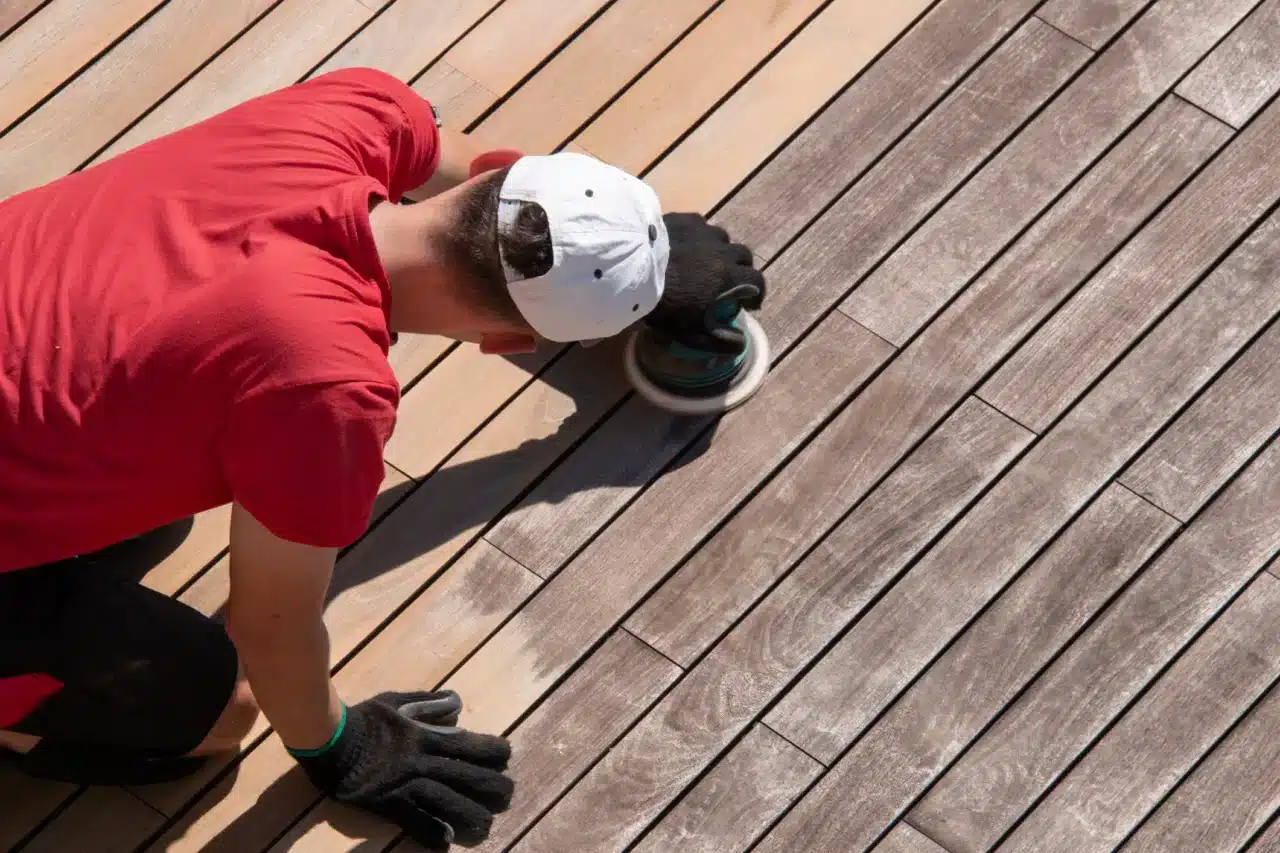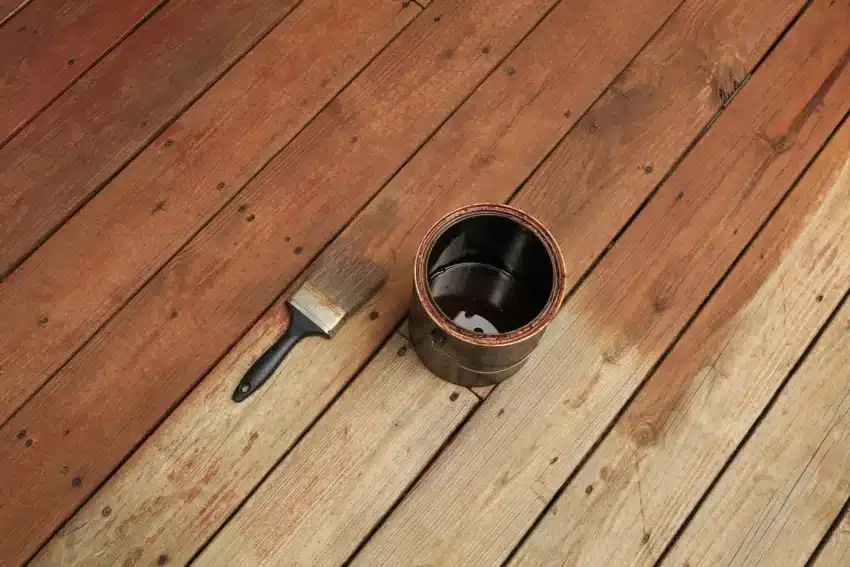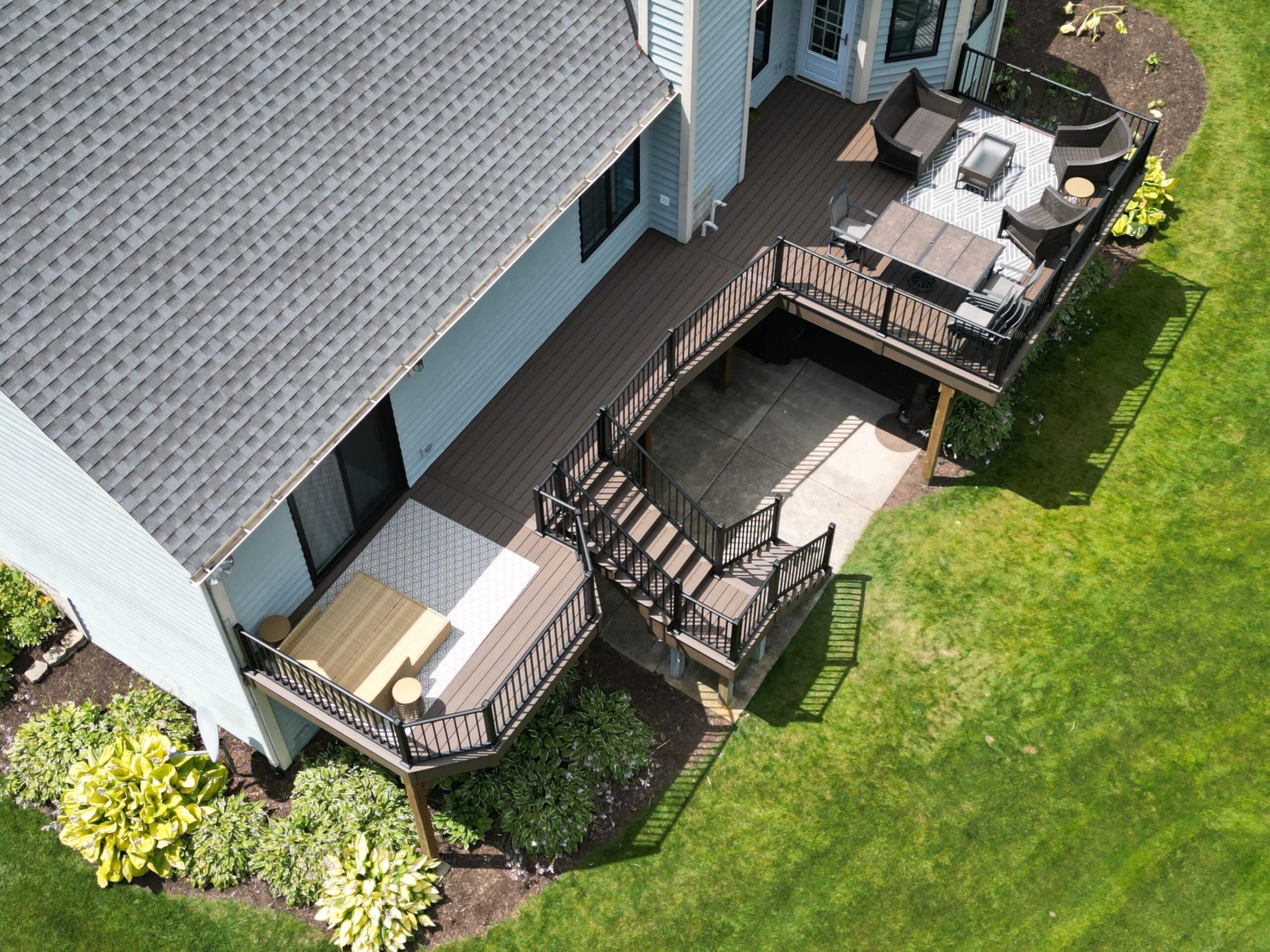Your wood deck is a valuable outdoor space that enhances your home’s appeal and provides an area for relaxation and entertainment. However, exposure to the elements can gradually degrade its appearance and structural integrity. While refinishing can restore its look, it’s important to properly prepare the surface through stripping to achieve long-lasting results.
Before beginning the process, a professional, such as Hometown Builders, might assess your deck’s condition to ensure it doesn’t need more extensive resurfacing or replacement. Addressing these potential issues upfront can save time and money and prevent safety concerns.
The Importance of Deck Stripping

Stripping your deck before refinishing is an important step that ensures the long-term durability of the surface. Properly removing old finishes improves the outcome, protects the deck’s structure, and prolongs its life.
- Removes Old Finish: Stripping eliminates the remnants of previous stains, paints, or sealants, ensuring that the new deck finish can fully adhere to the wood. New coatings might not bond properly without stripping, leading to peeling, unevenness, or early wear.
- Reveals Hidden Issues: The process of stripping the deck surface can expose underlying problems such as wood rot, loose boards, or cracked planks that could compromise the deck’s safety. Identifying these issues early on allows for timely repairs before any refinishing work begins.
- Improves Stain Penetration: A freshly stripped deck allows the new stain to penetrate the wood more deeply, enhancing the surface’s protection and appearance. This deeper penetration creates a more even finish that can withstand weathering and foot traffic for longer.
- Ensures Even Application: Stripping provides a clean, uniform surface that prevents blotchiness or streaks when applying a new stain or sealant. This step helps ensure a smooth, professional-looking result that enhances your deck’s overall appearance.
How You Know When It’s Time to Strip Your Deck

Knowing when to strip your deck is essential to maintaining its appearance and protecting its structural integrity. Timely stripping ensures that the new finish adheres properly and prevents future damage.
- Seasonal Considerations: The best time to strip your deck is during dry, mild weather, typically spring or summer. This ensures the wood has adequate time to dry after stripping, which needs to happen before applying a new finish.
- Signs It’s Time for Stripping: If your deck’s finish is peeling, flaking, or fading, it’s time to strip the entire surface. Other signs include water no longer beading on the deck or the appearance of gray, weathered wood, both indicating that the protective coating has worn off.
- Visible Damage: Warps, cracks, or splintering boards suggest that the deck needs more attention than refinishing. Stripping the deck will reveal the extent of the damage and allow for necessary repairs before applying a new finish.
- Aging Finish: If it’s been several years since your deck was last refinished, stripping might be needed to remove old layers of stain or sealant, ensuring a fresh surface on which the new finish can bond properly.
The Deck Stripping Process

Properly stripping your deck ensures the new finish adheres well and provides lasting protection. Following the proper steps ensures a clean, prepared surface for refinishing.
- Cleaning: Start by thoroughly cleaning the deck to remove dirt, debris, mold, and mildew. This step creates a clear surface for the stripping agent to work effectively and prevents debris from getting trapped under the new finish. If you use a power washer, be careful. You don’t want the pressure to be too high when pressure washing.
- Applying Stripper: Apply a deck stripper according to the manufacturer’s instructions, ensuring you follow the recommended dwell time. This chemical solution softens and loosens old finishes, making them easier to remove.
- Scrubbing: Use a stiff-bristle brush or a deck scrubber to agitate the stripper and remove the old stain or sealant. Pay extra attention to areas with stubborn spots to ensure a thorough stripping.
- Rinsing: After scrubbing, rinse the deck thoroughly, preferably with a pressure washer set at a safe PSI. This helps remove any residue from the stripper and leaves the deck clean and ready for the next step.
- Neutralizing: Apply a deck brightener or neutralizer to balance the wood’s pH and restore its natural color. This step also opens the grain of the wood, allowing the new finish to penetrate more deeply for better protection.
Safety Considerations and The Value of a Professional Assessment

It is critical to ensure your deck is structurally sound and safe before refinishing. Stripping your deck can reveal hidden safety hazards, making it a perfect time to assess its overall condition. A professional assessment from experts like Hometown Builders can identify and address issues that may not be apparent, ensuring the safety and longevity of your deck.
- Understand What You Are Getting Into: Stripping can reveal hidden issues like rotting wood, loose fasteners, unstable railings, or improper board spacing, all of which compromise deck safety. A professional can identify these problems and ensure the deck is stable and secure for long-term use.
- Professional Assessment: A thorough inspection by Hometown Builders goes beyond the surface and might uncover deeper structural issues, including the supporting structure. Professionals can also check for code compliance, ensuring your deck meets local safety regulations and preventing potential fines or future complications.
- Cost-Effective Decision-Making: A professional can help determine whether your deck needs to be resurfaced or replaced. If the deck shows signs of significant damage or instability, replacing it might save more in the long run than simply refinishing.
- Moisture Damage Detection: Moisture trapped under old finishes can cause unseen damage. Professionals can detect moisture issues that could lead to rot, mold, or mildew and ensure these problems are fixed before refinishing begins.
Opting for a professional evaluation before refinishing ensures your deck’s safety, structural integrity, and long-term value.


